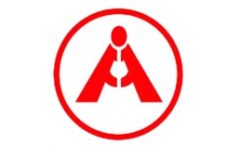Noncurrent assets are items that a company does not expect to convert to cash in one year. Examples of noncurrent assets include long-term investments, property, plant, and equipment. These are considered liquid assets because they can quickly be converted into cash when needed. Cash equivalent assets include marketable securities, short-term government bonds, treasury bills, and money market funds. Prepaid expenses—which represent advance payments made by a company for goods and services to be received in the future—are considered current assets.
The most common current assets are cash, accounts receivable, inventory, and prepaid expenses. These are all resources that a company can use in the current period to purchase new assets, pay debts and expenses, or convert into cash. The asset section may be broken into current and noncurrent assets. And the current assets may be further broken down and ordered based on their liquidity — how easily they can be converted into cash. For example, cash and cash equivalents may be listed first, while inventory and accounts receivable could be further down. Stucky says a company’s current assets can offer a lens into how much liquidity the company will have to fund its everyday operations and meet near-term financial obligations.
Net Working Capital = Current Assets – Current Liabilities
The quick ratio, or acid-test, measures the ability of a company to use its near cash or quick assets to extinguish or retire its current liabilities immediately. Quick assets are those that can be quickly turned into cash if necessary. It would not be used for substantial period of time such as, normally, twelve months. “How to do accounting for your startup are one of the first steps in assessing the financial soundness of a company,” says Stucky. “But analysts go much further and assess those current assets against current liabilities … financial obligations that a business expects to incur over the near term.”
You simply add up all of the cash and other assets that can easily convert into cash in a year. If you have too much inventory, your https://quickbooks-payroll.org/non-profit-accounting-definition-and-financial/ items could become obsolete and expire (e.g., food items). You‘ll spend too much money on manufacturing and storing the merchandise.
What are the Current Assets?
Capital investment is money invested in a company with the goal of advancing its commercial objectives. Charlene Rhinehart is a CPA , CFE, chair of an Illinois CPA Society committee, and has a degree in accounting and finance from DePaul University. This is a major turn off for potential investors who heavily rely on financial analysis reports before investing in a company. Of the many types of Current Assets accounts, three are Cash and Cash Equivalents, Marketable Securities, and Prepaid Expenses. For these reasons, you should view inventory with a skeptical eye. It is also possible that some receivables are not expected to be collected on.
- One characteristic that all short-term assets have is that they are fairly liquid.
- Thus, both gross receivables and allowance for doubtful accounts have to be reduced in such scenarios.
- They might be inventory, cash, assets held for sale, or trade and other receivables.
- Accounts Receivable – Accounts receivable is essentially a short-term loan to customers and vendors who purchase goods on account.
- Investments – Investments that are short-term in nature and expected to be sold in the current period are also included in this category.
- Managing working capital is vital for business growth and helps avoid cash flow problems.
According to Apple’s balance sheet, it had $135 million in the Current Assets account it could convert to cash within one year. This short-term liquidity is vital—if Apple were to experience issues paying its short-term obligations, it could liquidate these assets to help cover these debts. Following is the balance sheet of Nestle India as on December 31, 2018. The balance sheet displays current assets, current liabilities, fixed assets, long term debt and capital of Nestle as on that date. Thus, cash appears as first item under the account head “current assets” in the balance sheet as it is the most liquid asset of the entity. This is because all the items in the current assets account category are listed in the order of liquidity of the assets.
Stock or Inventory
Quick ratio is a more cautious approach towards understanding the short-term solvency of a company. It includes only the quick assets which are the more liquid assets of the company. The trade receivables in Nestle’s balance sheet for the year ended December 31, 2018 stood at Rs 1,245.90 million. Now, the company adopts a different approach to calculate accounts receivables.
If your company has a stock of unused supplies, list them under https://1investing.in/law-firm-bookkeeping-and-accounting-a-completed/ on your balance sheet. A current asset is an item on an entity’s balance sheet that is either cash, a cash equivalent, or which can be converted into cash within one year. If an organization has an operating cycle lasting more than one year, an asset is still classified as current as long as it is converted into cash within the operating cycle.
